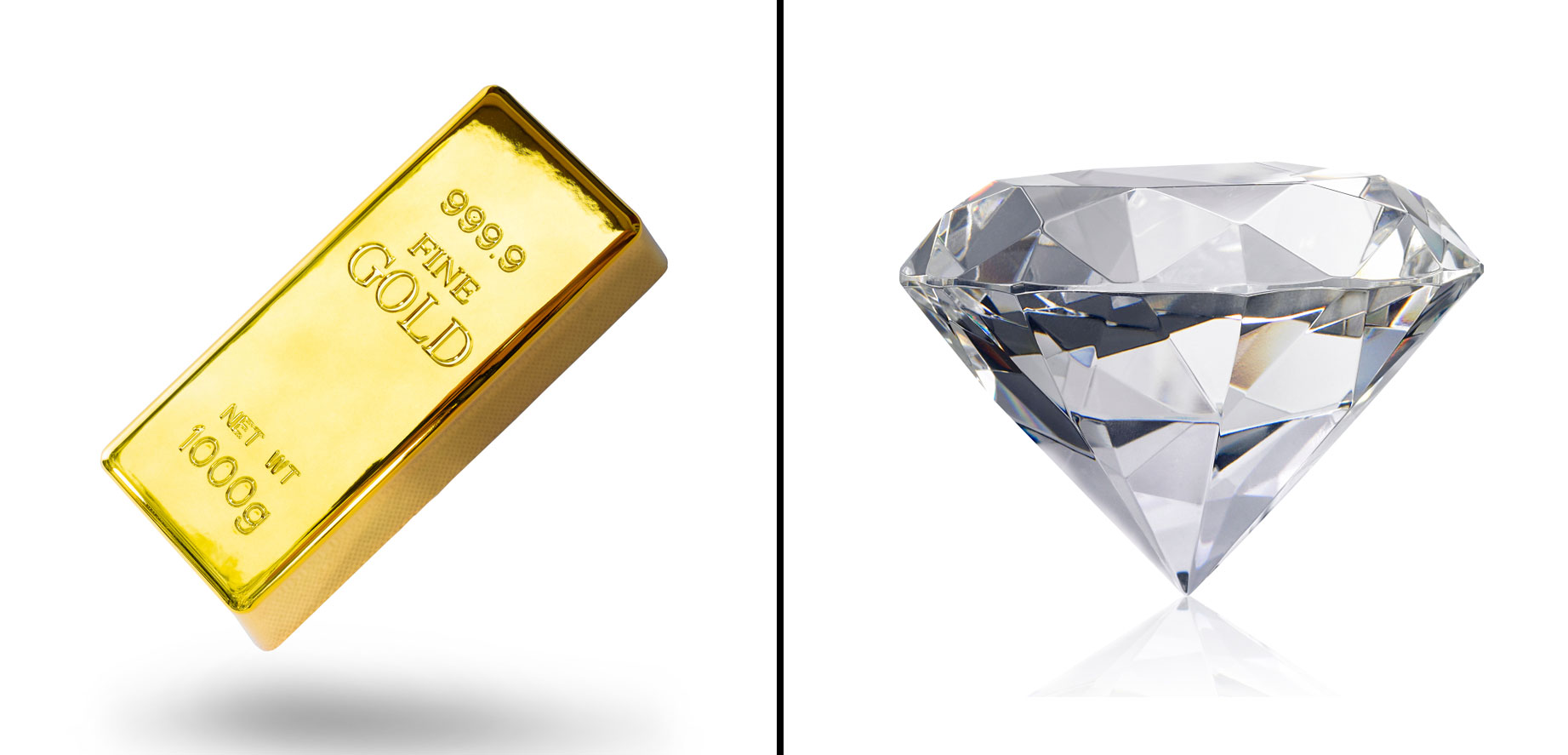Understanding Diamond Value
While comparing diamond vs gold value, it’s important to start with understanding the value of diamonds. Diamonds are valued based on the 4Cs: Carat, Cut, Variety, and Clarity. The carat weight determines the size, the cut affects its brilliance, the variety alludes to the presence of any shades, and clarity measures the presence of internal or external imperfections. Each of these factors contributes to a diamond’s overall value, making it an extraordinary and frequently high-value investment. Knowing these aspects can assist you with assessing the value of diamonds in comparison to gold.
Understanding Gold Value
In the debate of diamond vs. gold value, gold has its own arrangement of valuation criteria. Gold is valued primarily based on its virtue, measured in karats (with 24 karat being unadulterated gold) and weight, usually communicated in official ounces. The price of gold is also influenced by market demand, geopolitical stability, and economic factors. Dissimilar to diamonds, which are valued on unambiguous attributes, gold’s value is more straightforward, tied straightforwardly to its weight and immaculateness. Understanding these factors helps in evaluating gold’s value relative to diamonds.
Market Patterns and Price Fluctuations
While examining diamond vs. gold value, market patterns and price fluctuations play a significant job. Gold prices are known for their volatility, frequently influenced by global economic conditions, inflation rates, and money fluctuations. Conversely, diamond prices can be more stable yet are influenced by organic market dynamics and market opinion. Tracking these patterns helps in making informed decisions about investing in either diamonds or gold. Understanding how market conditions affect the prices of both can guide you in choosing the more advantageous investment.
Investment Potential: Diamonds vs. Gold
In the context of investment potential, comparing diamond vs. gold value involves analyzing their individual advantages. Gold is traditionally viewed as a safe haven investment, frequently retaining or increasing its value during economic downturns. It’s also widely traded and perceived globally. Diamonds, on the other hand, can offer significant value, especially in the event that they are of top notch or rarity. However, the diamond market can be less liquid compared to gold, making it potentially more challenging to sell. Assessing the investment potential of both requires considering factors like liquidity, market stability, and personal investment goals.
Rarity and Supply Considerations
The rarity and supply of diamonds versus Sydney gold buyers also impact their value. Diamonds are relatively rare, especially top notch ones, which can drive up their price. The stock of diamonds is controlled by a couple of major players, influencing their market value. Gold, while also considered rare, is more abundant compared to diamonds and is mined in larger quantities. This distinction in supply affects the stability and value of the two assets. While comparing diamond vs. gold value, understanding these rarity and supply factors can provide insight into their particular investment merits.
Usage and Applications
Diamonds and gold have various purposes and applications, which also influence their value. Gold is widely utilized in jewelry, electronics, and as a form of cash, making it a versatile asset with different applications. Diamonds are primarily utilized in jewelry and for their industrial applications, like cutting and drilling. The varied purposes of gold and diamonds can affect their demand and value. While evaluating diamond vs. gold value, considering how these materials are used can help in understanding their market dynamics and investment potential.
Historical Performance and Patterns
Examining historical performance is crucial while comparing diamond vs. gold value. Gold has a long history as a stable investment and has been utilized as a store of value for hundreds of years. Its performance will in general be more predictable and is in many cases utilized as a fence against inflation. Diamonds, while also valuable, have shown greater variability in their prices because of market patterns and consumer inclinations. Analyzing the historical performance of both can offer insights into their reliability as investments and their potential for future appreciation.
Conclusion
Comparing diamond vs. gold value involves evaluating various factors including their valuation criteria, market patterns, investment potential, rarity, usage, and historical performance. Diamonds offer extraordinary value based on their 4Cs and can be a significant investment, particularly for great stones. Gold, with its straightforward valuation based on virtue and weight, is traditionally seen as a safe haven investment. Both have their own advantages and considerations, and the decision between investing in diamonds or gold relies upon individual goals, market conditions, and personal inclinations. By understanding these factors, you can make a very much informed decision about which asset aligns better with your investment strategy.

